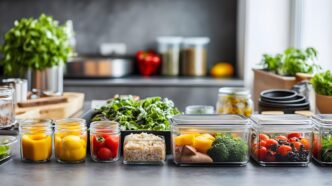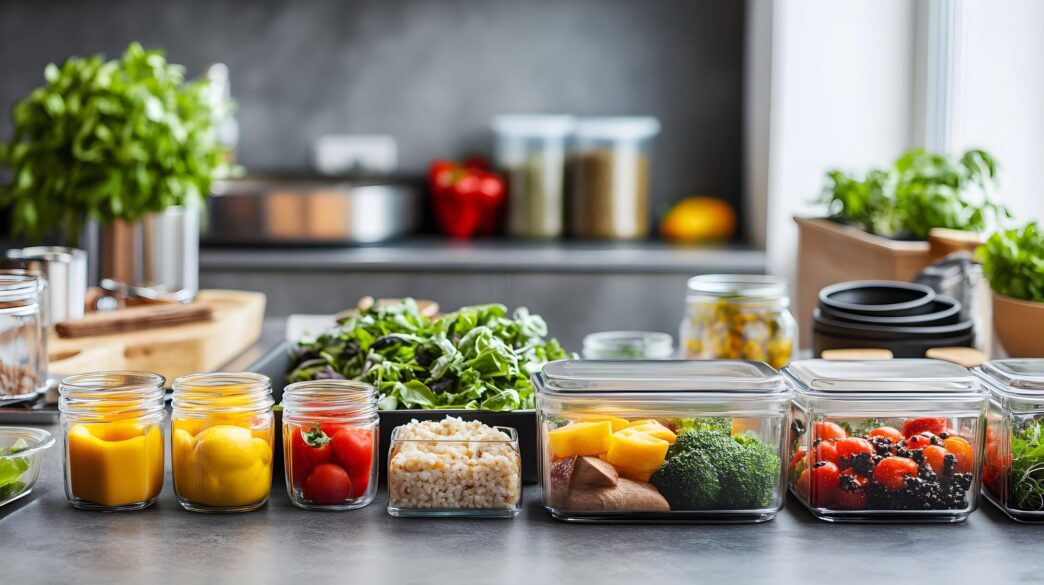A Quick Takeaway
The Story Behind the Trend
How to Make It Work for You
The Community View
Transforming your kitchen is a pivotal step for anyone looking to cultivate a genuinely healthier home and lifestyle, impacting daily nutrition, eating habits, and overall well-being. This comprehensive checklist will guide you through optimizing your kitchen environment, from decluttering and smart stocking to upgrading tools and fostering mindful habits, ultimately making nutritious choices easier and more enjoyable for every member of your household.
Declutter and Organize for Clarity
A cluttered kitchen often leads to a cluttered mind and can hinder healthy cooking efforts. Begin by systematically decluttering every area to create a more functional and inviting space.
Clear Countertops, Clear Mind
Remove unnecessary gadgets, papers, and decorative items from your countertops. Keep only frequently used, essential items visible, such as a fruit bowl or a coffee maker.
This practice not only makes cleaning easier but also creates a sense of calm and makes the kitchen feel more spacious and welcoming for food preparation.
Pantry Overhaul: Out with the Old, In with the Good
Empty your pantry shelves and discard any expired, stale, or unhealthy processed foods. Look for items high in added sugars, unhealthy fats, and artificial ingredients.
Organize remaining items by category – grains, legumes, spices, healthy snacks – using clear containers to maintain visibility and freshness. This makes it easier to find what you need and prevents over-buying.
Fridge and Freezer Refresh
Clean out your refrigerator and freezer, tossing expired foods and mystery leftovers. Wipe down all surfaces thoroughly with a natural cleaner.
Arrange fresh produce, lean proteins, and healthy dairy alternatives at eye level to encourage healthier snacking and meal choices. Utilize clear bins to group similar items and maximize space.
Stock Smart: The Foundation of Healthy Eating
Once organized, the next crucial step is to stock your kitchen with nutritious, versatile ingredients that support your health goals. Think of your pantry as your personal health store.
Whole Grains and Legumes
Prioritize whole grains like quinoa, brown rice, oats, and whole-wheat pasta, which provide sustained energy and fiber. Stock a variety of legumes such as lentils, chickpeas, and black beans for plant-based protein and fiber.
These staples are foundational for countless healthy meals and are excellent for batch cooking.
Lean Proteins and Healthy Fats
Ensure a consistent supply of lean proteins like chicken breast, fish, eggs, and tofu. These are essential for muscle repair and satiety.
Incorporate healthy fats from avocados, nuts, seeds, and olive oil, which are vital for hormone function and nutrient absorption. Keep a variety on hand for cooking and snacking.
Abundant Fruits and Vegetables
Fill your fridge with a colorful array of fresh fruits and vegetables, making them easily accessible for snacks and meal additions. Don’t forget frozen options, which are equally nutritious and convenient.
Aim for a diverse selection to ensure you’re getting a wide range of vitamins, minerals, and antioxidants daily.
Smart Snacking Options
Replace highly processed snacks with healthier alternatives like unsalted nuts, seeds, Greek yogurt, fresh fruit, and vegetable sticks with hummus. Prepare these in advance for grab-and-go convenience.
Having healthy snacks readily available helps prevent impulsive unhealthy choices when hunger strikes.
Upgrade Your Tools and Equipment
The right kitchen tools can make healthy cooking more efficient, enjoyable, and safer. Consider investing in items that support your wellness journey.
Non-Toxic Cookware
Replace old, scratched non-stick pans with options made from safer materials like cast iron, stainless steel, or ceramic. These reduce exposure to potentially harmful chemicals.
This investment is crucial for ensuring that your healthy ingredients remain untainted during the cooking process.
Essential Appliances for Healthy Prep
Consider appliances that streamline healthy cooking, such as a high-speed blender for smoothies and soups, a food processor for chopping vegetables, or an air fryer for healthier “fried” foods.
These tools can significantly cut down on preparation time, making healthy meals more accessible on busy days.
Food Storage Solutions
Invest in glass containers for meal prepping and storing leftovers, which are non-toxic, durable, and keep food fresher. Avoid plastic containers, especially for heating food, to reduce chemical leaching.
Proper food storage is key to reducing food waste and making healthy choices readily available throughout the week.
Cultivate Healthy Habits
Beyond physical organization and stocking, a healthy kitchen also fosters positive behaviors and routines.
Meal Planning and Prep
Designate a specific time each week for meal planning and batch cooking. This strategy reduces stress during busy weekdays and ensures you always have nutritious options ready.
Having a plan in place minimizes reliance on takeout and processed foods, saving both money and health.
Hydration Station
Set up a dedicated area with filtered water, reusable water bottles, and perhaps some natural flavorings like lemon or cucumber slices. Make hydration a visible and easy choice.
Encouraging consistent water intake is fundamental for overall health and often overlooked.
Mindful Eating Environment
Create an inviting dining area, whether at a table or a clean counter space. Turn off distractions like television during meals to encourage mindful eating.
Slowing down and savoring your food can improve digestion and help you recognize satiety cues more effectively.
Clean and Maintain for Wellness
A healthy kitchen is also a clean kitchen. Regular maintenance and smart cleaning choices contribute to overall well-being.
Natural Cleaning Products
Switch to natural, non-toxic cleaning products for your kitchen surfaces. Ingredients like vinegar, baking soda, and essential oils are effective and reduce exposure to harsh chemicals.
This creates a safer environment for food preparation and reduces indoor air pollution.
Regular Maintenance
Establish a routine for daily tidying, weekly deep cleaning, and monthly pantry/fridge checks. Consistency prevents overwhelming messes and keeps your kitchen in prime condition for healthy living.
A well-maintained kitchen is a constant invitation to cook and eat well, reinforcing your commitment to a healthier lifestyle.
Embarking on a kitchen transformation is a powerful commitment to your health and the well-being of your household. By systematically decluttering, stocking smart, upgrading tools, and cultivating mindful habits, you create an environment where healthy choices become intuitive and enjoyable. This checklist serves as your guide to building a kitchen that not only nourishes your body but also supports a sustainable, vibrant lifestyle.







